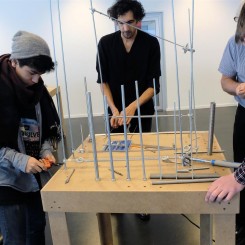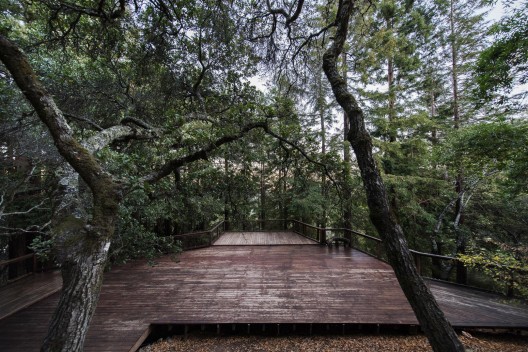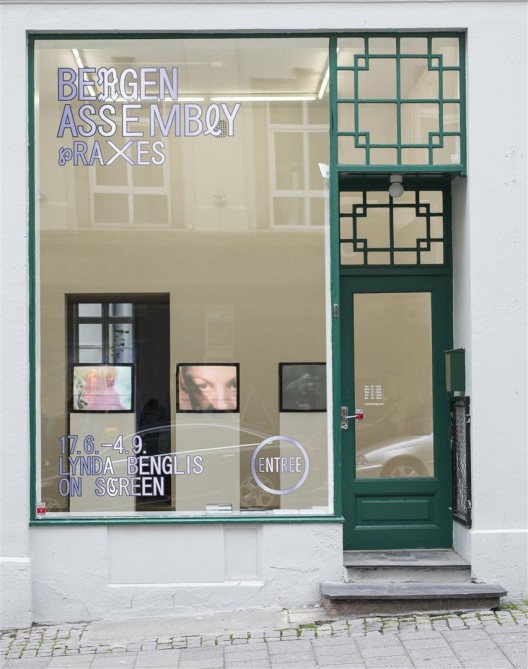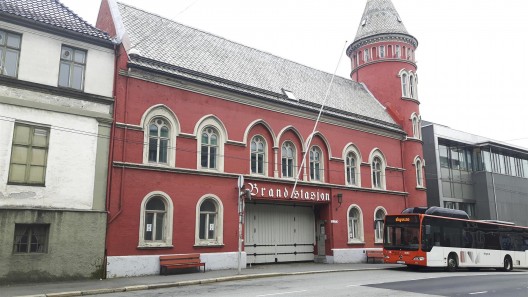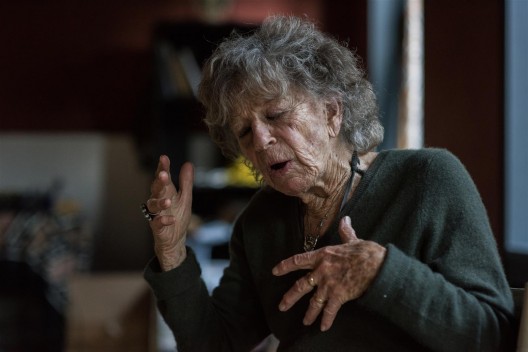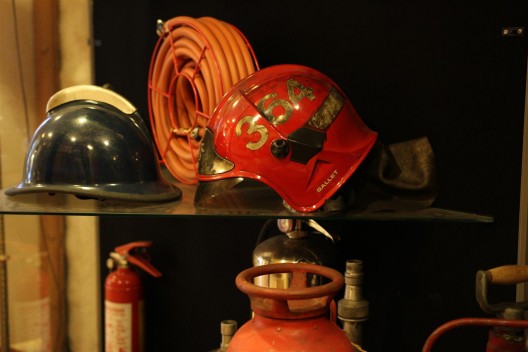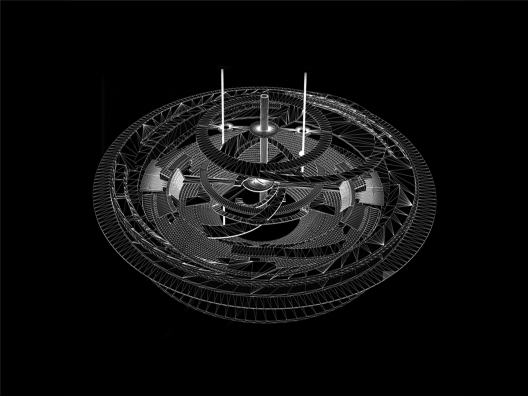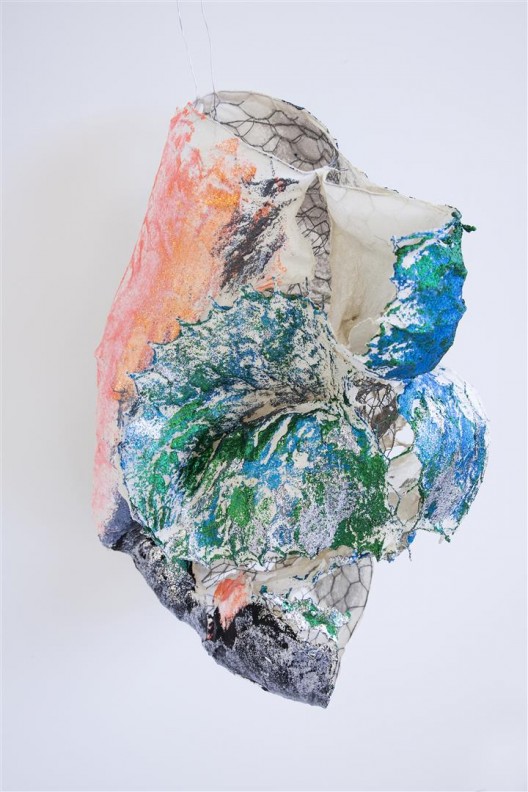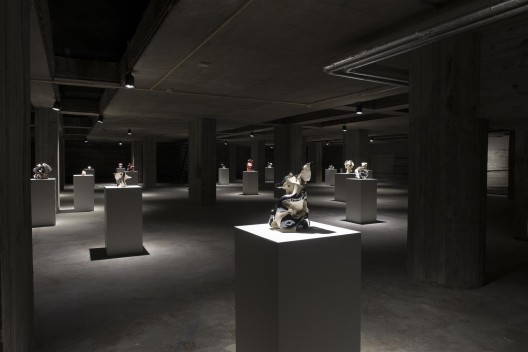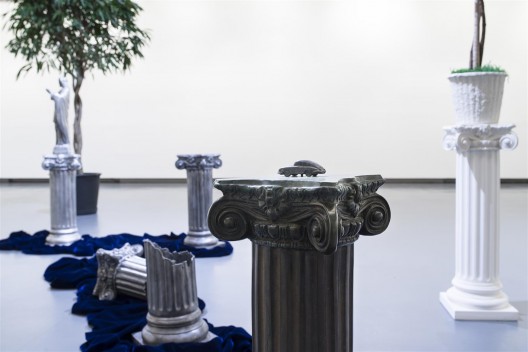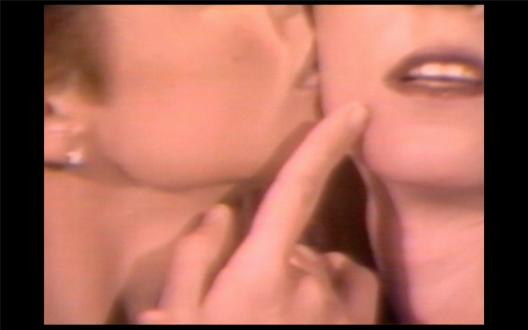Various locations, Bergen, Norway, through end September, 2016
It rains in Bergen. A lot, and all the time. It rains so much that when it doesn’t it feels somehow wrong. In a city where it pours down on you religiously, irrigation and drainage are key—and Bergen has one of the most advanced systems in the world. But whichever local you talk to about it will, on the one hand, think you’re weird for asking about irrigation and, on the other, brush it off as nothing out of the ordinary. Yet it is. This lax attitude toward the formidable funneling of so much water so that the whole county doesn’t flood is because they’re used to it, and likely fed up with each and every visitor being (like me) astonished at how people settled and continue to live in a place so hellishly wet. That said, it has its perks. Aside from clean air, a certain communal feeling develops when everyone’s so soaked. A bond emerges between people. Kind nods, affectionate shrugs, and genuinely polite smiles are exchanged more here than probably anywhere else. We’re all in the rain, and so it comes to seem as if we’re in something together.
The relevance of this to the Bergen Assembly on which I am about to report is that this year’s theme is (partly) “Infrastructure.”
The question “to biennial or not to biennial” shepherded the first Bergen Assembly in 2009. Whoever was in the position to choose chose instead to triennial, and the Bergen Assembly has since been understood to be a more discursive sort of art event. Most often, it is an exhibition abutting a sizable summit, conference, or such like. So it is this time, organized by three groups. None are “curators” but rather “conveners.” Freethought—a loose collective composed of Irit Rogoff, Stefano Harney, Adrian Heathfield, Massimiliano Mollona, Louise Moreno, and Nora Sternfeld—is responsible for a summit on “infrastructure” as well as an exhibition in a ramshackle former office building and café housed in an adjacent old fire station. Praxes—a group of two, Rhea Dall and Kristine Siegel—curated one exhibition at the Bergen Kunsthall and another show at a place called Kunstgarasjen, in addition to organizing a small presentation of works in the foyer of the municipality offices. The artist Tarek Atoui, together with Council (founded by Sandra Terdjman and Grégory Castéra), organized a presentation of a multitude of things —including an installation, film-program, and “sound-café”— that came together as a social space/exhibition/concert hall at a disused indoor pool. In the spirit of convening, all these people have, in turn, involved a teeming mass of other people, too many to mention here.
Nowadays, a lot of great art comes down to questions of how people move about in the world; it also sees that different people move in different ways through what are, by all means, different worlds. The attempt to parse something like infrastructure is therefore nothing less than ingenious. My personal authority on all things infrastructure is Keller Easterling, and her Extrastatecraft: The Power of Infrastructure Space (2014) is an extraordinary book. What is immediately laid out is that infrastructure “typically conjures associations with physical networks for transportation, communication, or utilities.” Yet it is also “the rules governing the space of everyday life.” Easterling ponders the places where we live, like skyscrapers, garages, and free zones, and writes, “In the retinal afterglow is a soupy matrix of details and repeatable formulas that generate most of the space in the world—what we might call infrastructure space.” It’s a way of talking about different people moving in different ways in different worlds, and seeing that they don’t move, but rather are moved. Infrastructure doesn’t make up the condition of our lives; it is the condition of our lives.
As with any exhibition, there is a lot to say—and this one convenes three organizing groups and comes with a jam-packed summit. It might come off as cursory, but I will try to account for many of the bits and pieces that made up the Bergen Assembly. I will also try to convey why I think it was mostly very good.
The projects by Tarek Atoui and Council were housed in a stunning indoor pool facility that is no longer in use. At the entrance, side rooms, and empty kids’ pool, Council organized a film program, a café, and a presentation of objects associatively intertwined, tied to an idea of sound beyond hearing and hearing beyond sound—anyone who has listened to the apparent echo of the ocean in a seashell will understand. In the deep end of the big empty pool stood nine instruments, each developed by Atoui in collaboration with others and then tested and improved by people who cannot hear. It’s a project that Atoui has worked on for years, and will continue to work on. The space is a space of production where workshops, concerts, and the like will happen throughout the exhibition. And what’s great about it all—especially Atoui’s contribution—is precisely the question of people moving about in the world, which, as I’ve already argued, is one of the fundamental concerns of much of the best art of recent years. The meeting of the hard-of-hearing and deaf with those who can hear is a meshing of perceptions. The project isn’t intended to make someone who can hear feel sympathy for someone who doesn’t, nor is it to allow the deaf some sense of what it might be like to hear. Nor does it try to make the two meet halfway between hearing and not. Instead, and rather successfully, it attunes people to an entirely different tenor by tapping into frequencies and modes of sound that all can take part in.
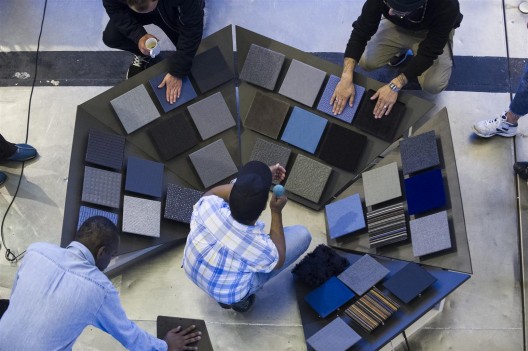
Tarek Atoui, “WITHIN Instrument”, testing, Sentralbadet, Bergen Assembly 2016. Photo: Thor Brødreskift
The exhibition by Praxes at Bergen Kunsthall seems, on the other hand, largely concerned with how people move around in the art world. It’s terribly museological and firmly set within art-institutional practice—a group exhibition with works by Nairy Baghramian, Olga Balema, Daiga Grantina, Sterling Ruby, and Kaari Upson that circles around the artist Lynda Benglis, whose work is also on view. Now, while Benglis is a remarkably interesting artist, the work here is shown as art-historical artifacts. It is telling that there’s a documentary on Benglis screening in another room, casting a very long shadow and practically exhibiting all of Benglis’s work “as documentary,” flanked by other artworks to illustrate its place in the annals of history. It is unfortunate that wild, fluid, very-much-alive artworks have been tamed into a mode of archival display. Its immaculate installation somehow makes it worse: had the placement of works at least been a little quirkier, then perhaps something interesting might have happened. Alas, everything is placed exactly where it should be placed. Let me say this: I’ve seen this show before. Not literally of course, but it’s textbook enough to seem as though I have. Sure, Praxes had engaged Benglis in a long-term project with several stages before my visit, and there are things that will happen yet, and part of their work is really quite interesting. All this is stuff that I’ve been told; what I see is this model show. The issue is beyond whether it is wrong or bad—it’s more, does it do any good?
There’s a similar tendency with the Marvin Gaye Chetwynd exhibition at Kunstgarasjen. A few videos of performances surround props from a few other performances. Like the documentary on Benglis, what is revealing is the low-riding, elongated pedestal on which all props are placed. Chetwynd’s work, which is meant to be enlivened, vigorous, and fun, instead becomes museological, archival, and documentary. Propped up, as it were, against traditional modes of display, a practice that had worked on breaking with such terms by taking from amateurish theater loses some of its pitch. There was a performance, too, in another off-site garage-like tunnel. They’re often billed as carnivalesque, anarchic, and just totally crazy. Perhaps it was the sangfroid of the Nordic audience, or perhaps my expectations were too high because I’d never seen one before, but this performance seemed pretty controlled and meek. Much more interesting was Chetwynd’s display of works in the foyer of the municipality building, a bijou exhibition of bat paintings—that is, paintings that depict bats—entitled Are You Bats, which I took to be a sly nod toward the municipality.
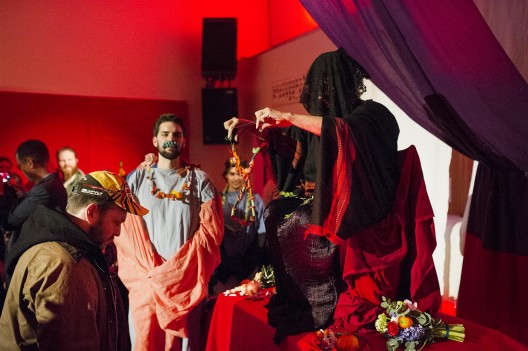
Marvin Gaye Chetwynd, “The Iron Age Pasta Necklace Workshop”, installation view (Landmark/Bergen Kunsthall), Bergen Assembly, 2016. Photo: Thor Brødreskift
Freethought developed a multifarious project that really warranted its own review: too much, I realize now, to expound upon in detail. While everything stood out, what was particularly noteworthy was The Partisan Café, a play on “the Partisan Café House,” a site in London set up by Raphael Samuel, Stuart Hall, and other members of the journal New Left Review in the late 1950s. Apparently, it was also called an “Anti-Espresso Bar”—something I am sympathetic to. The Bergen remake was a space for talks, seminars, and debates, but also—and equally importantly—just for hanging out. In the exhibition, one of the nodes in the constellation was the Anectoded Archives, a series of filmed interviews with people speaking about exhibitions that had meant a lot to them. None mentioned the canonical exhibitions taught in curatorial courses, but rather shows that, for each interviewee, had been significant on a more personal frequency. Remarkable, too, was the exhibition within the exhibition that had developed from a conversation between Stefano Harney and Ranjit Kandalgaonkar called Shipping and the Shipped, which featured work by Kandalgaonkar, as well as collaborations between Denise Ferreira da Silva and Arjuna Neuman and between Fred Moten and Wu Tsang. In the introductory text, Harney writes that “a history of shipping cannot be separated from a history of the shipped” and “shipping remains as much at the center of capital’s infrastructural imagination as it was in its first gruesome mobilization.”
In many ways, this exhibition ran parallel to the “Infrastructure” summit: two days of talks, films, and music around a question of infrastructure in times of economic disparity, ecological catastrophe, expulsion, and forced migration. I was enlivened by Elizabeth Povinelli, moved by Tom McCarthy, and taken in by the conversation between Wu Tsang, Stefano Harney, Hypatia Vourloumis, and Fred Moten on the not-so-easy subject of friendship. I encourage everyone to listen to recordings from the summit, which are generously provided on the Bergen Assembly’s website.
I will say, though—as my word limit draws near—that if we’re being moved, the question arises of how we might move differently. Not necessarily in direct opposition, but somewhat more out of sync with the given beat. And it would seem that this would have to happen with one another, along the lines of what da Silva calls a “difference without separation.” I’ve probably come off as exuberant and corny (because I am), and I might as well end on an even more rhapsodic note. So much of what these kinds of events can impart, when they’re done well, happens outside the scheduled activities and performances—in the simple meeting of people at lunch, on walks, in bars. On the last day, I trekked halfway up a mountain (for embarrassing reasons, we didn’t make it all the way) with someone I will consider a friend from now on. Speculating on what we’d seen, heard, and experienced, I had a sense similar to that of being in the rain. Outside the exhibition and summit, we found ourselves still in something, together, and I can think of no bigger compliment to give to this assembly.
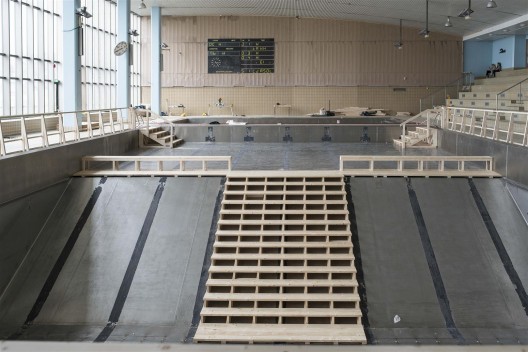
Tarek Atoui & Council, “WITHIN/ Infinite Ear” production shot, Bergen Assembly, 2016. Photo: Thor Brødreskift
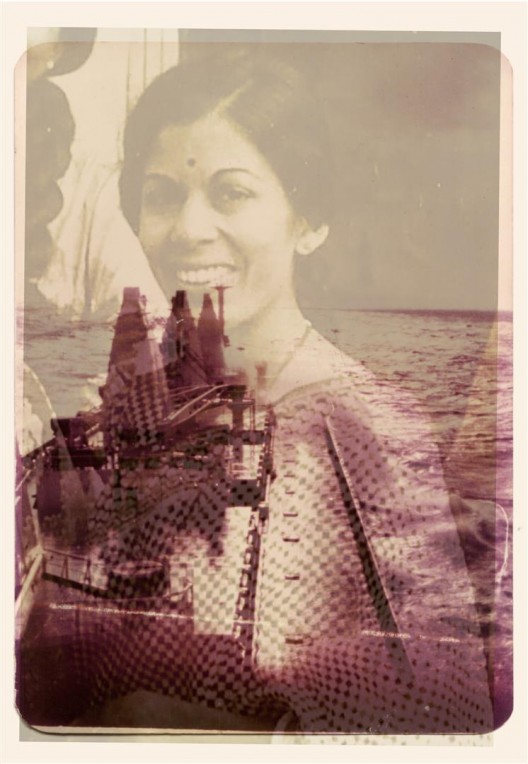
Ranjit Kandalgaonkar, “Home In the wake of Shipping Infrastructure”, giclee prints on canvas, 2015. © Ranjit Kandalgaonkar
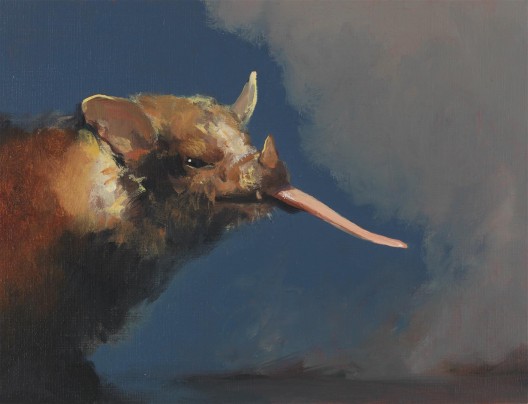
Marvin Gaye Chetwynd, “Bat Opera, oil on paper; 15.5 x 20.5 cm, 2014. Courtesy Massimo De Carlo, Milano/London/Hong Kong. Photo: Alessandro Zambianchi
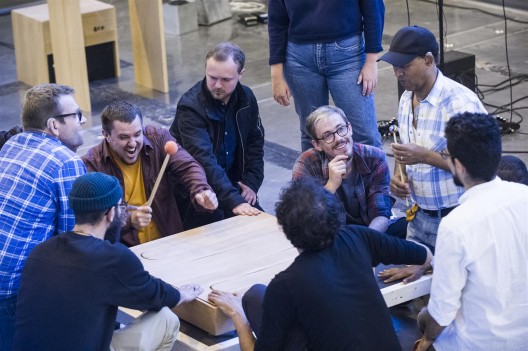
Tarek Atoui, “WITHIN Instrument”, testing, Sentralbadet, Bergen Assembly 2016. Photo: Thor Brødreskift
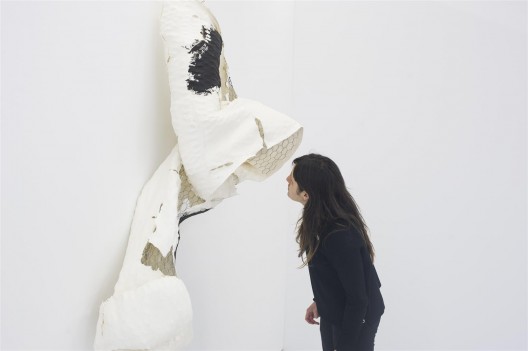
Lynda Benglis, “Something Else, handmade paper over chicken wire, coal dust, paint, acrylic, glitter, 2015. Photo: Thor Brødreskift

